Family : Serranidae

Text © Giuseppe Mazza

English translation by Mario Beltramini
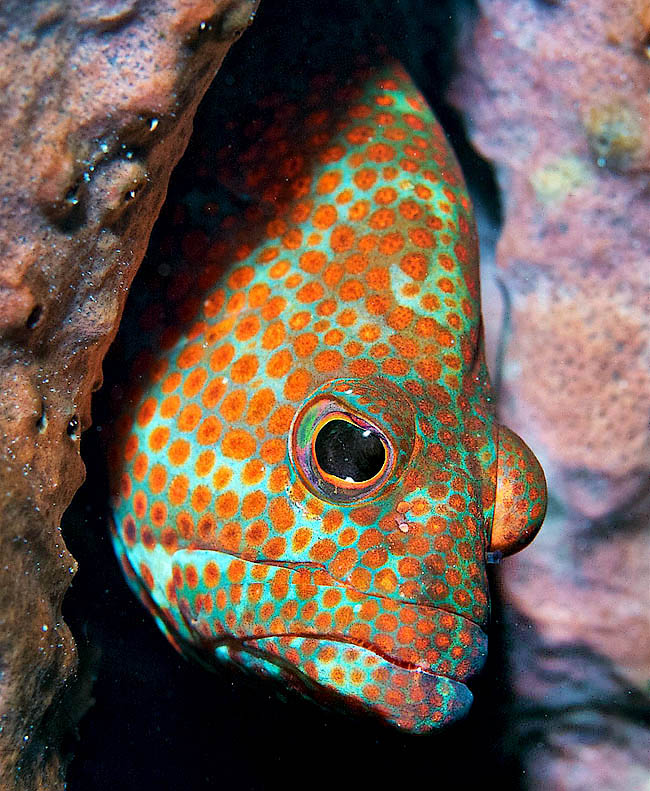
Cephalopholis cruentata is a small Caribeban grouper who may reach 33 cm and 2 ks, but rarely exceeds 20 cm © www.carlosestape.photoshelter.com
The grouper Graysby, Cephalopholis cruentata (Lacépède 1802), belongs to the class of the Actinopterygii, the ray-finned fish, to the order of the Perciformes and to the family of the Serranidae, that counts 75 genera and more than 500 species.
After some scholars who have created the subfamily Epinephelinae isolating about 170 species including this one, should instead be placed instead with the congeners, like Cephalopholis fulva and Cephalopholis miniata, in the family Epinephelidae.
The etymology of Cephalopholis, term created by Bloch & Schneider in 1801, originates from the Greek “kephale”, head, and “pholis”, scale, with reference to the fact that the fore part of the snout has none of them.
The specific name cruentata of Lacépède, bloody in Latin, recalls us instead the colour, mostly red, of the livery.
Zoogeography
Cephalopholis cruentata is present in the western Atlantic, from North Carolina up to south Florida, Bermudas, Gulf of Mexico, Bahamas and all Caribbean, including the coasts of Central America and the Antilles. Finally, it reaches, after Venezuela, also the north of Brazil.
Ecology-Habitat
It is a grouper moving mainly on the outer side of the reef, rich in dens, between the surface up to 150-170 m in depth.
Morphophysiology
Cephalopholis cruentata may reach 33 cm and 2 kg, but rarely exceeds 20 cm. It has the characteristic look of the serranids, with the lower jaw longer and the big mouth armed by several rows of teeth, hooked and caniniform on the front for holding the prey.
The snout, greatly longer than the diametre of the eyes, is flat or convex between them. The upper jaw has a bony protuberance below and the preoperculum, rounded with no spines or notches, displays a fine serration.
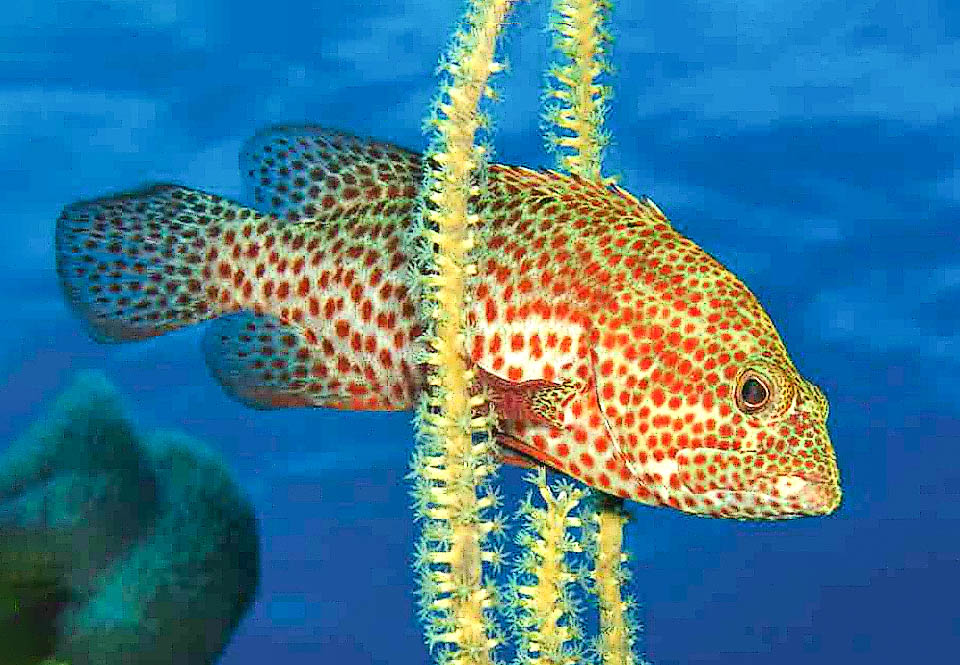
It has a livery dotted with orange-brown spots on grey, olive or brown background. The fins are rounded for a calm swimming © Mickey Charteris
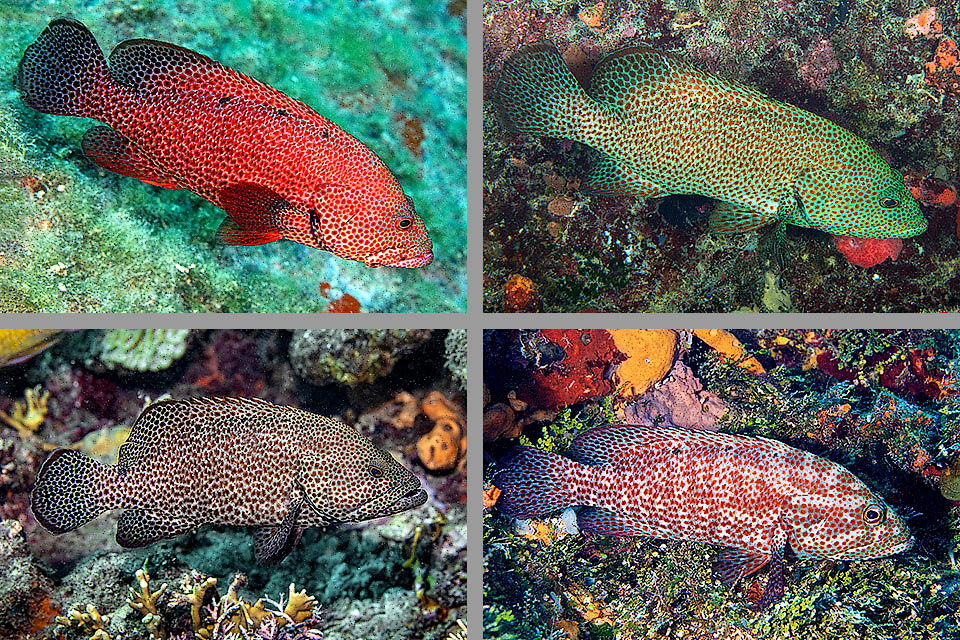
The chromatophores do miracles and the fish may in its whole appear red, green, greyish brown or mottled. Characteristic are the black small spots aligned on the back © www.carlosestape.photoshelter.com
The dorsal fin has 9 spiny rays and 13-15 soft; the anal 3 spines and 8 unarmed rays; the pelvic ones are shorter than the pectorals that have 16 rays and are rounded like the caudal, because the Grouper Grasby is not a fast fish but it moves in the surroundings of its den with a calm swim on a territory that usually does not exceed 2000 m².
The background colour of the livery is grey, brown or olive, covered by orange-brown spots, and we note four characteristic black spots aligned on the back that may change colour depending on the circumstances until they become white.
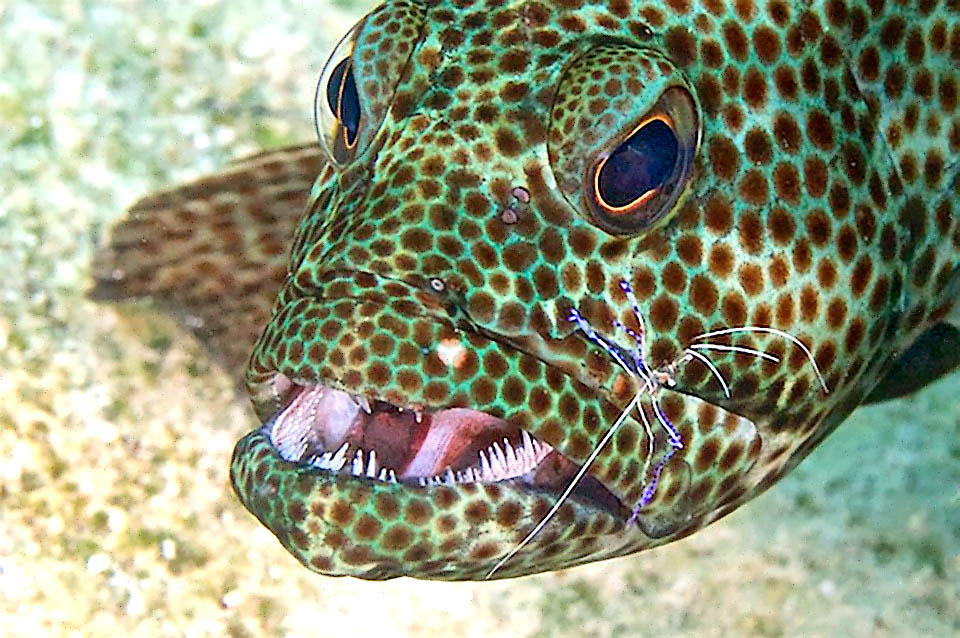
Here, in a cleaning station managed by the tiny shrimp Ancylomenes pedersoni, it shows us its numerous sharp teeth pointing inwards for holding the preys © www.carlosestape.photoshelter.com.jpg
The chromatophores perform miracles and the fish can in the whole appear red, green, greyish brown or mottled.
Ethology-Reproductive Biology
Cephalopholis cruentata is a nocturnal predator that mainly feeds on fish, mostly Chromis multilineata, whilst the juveniles prefer the shrimps.
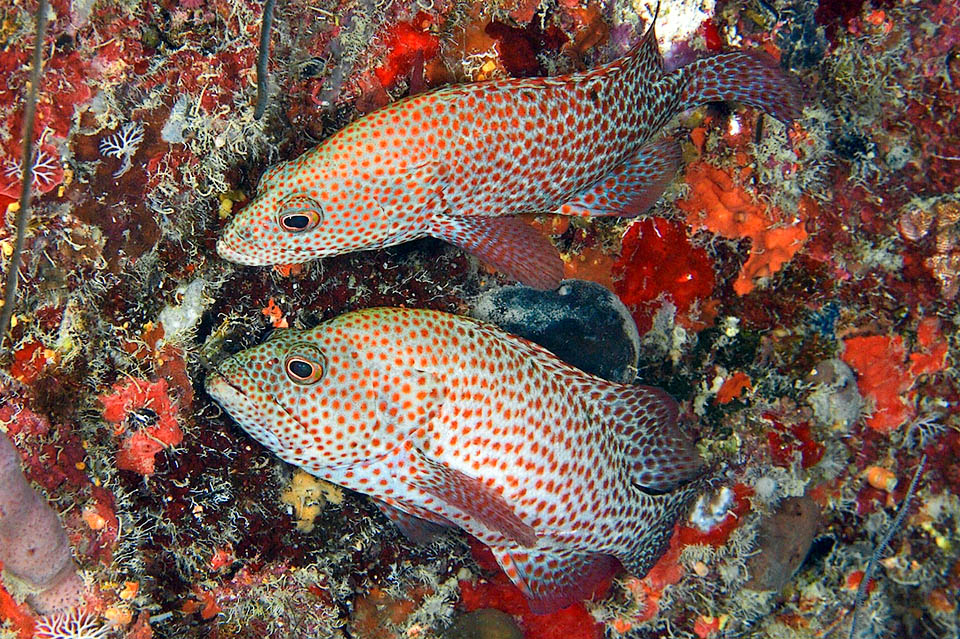
Cephalopholis cruentata is a protogynous hermaphrodite species, with females laying 260-600 eggs and when 4-5 years old may turn into males © www.carlosestape.photoshelter.com.jpg
It is a protogynous hermaphrodite species reaching the age of 13 years, that is with females who, starting from a certain size, when about 4-5 years old, can transform into males and own a territory with a small harem usually formed by 6 partners. The reproduction may occur between August and September with the deposition of 260-600 eggs per female, entrusted to the currents after the fecundation.
The resilience of the species is mediocre, with a minimum time for doubling the populations of 1,4-4,4 years, and the fishing vulnerability, relatively low, marks 33 on a scale of 100.
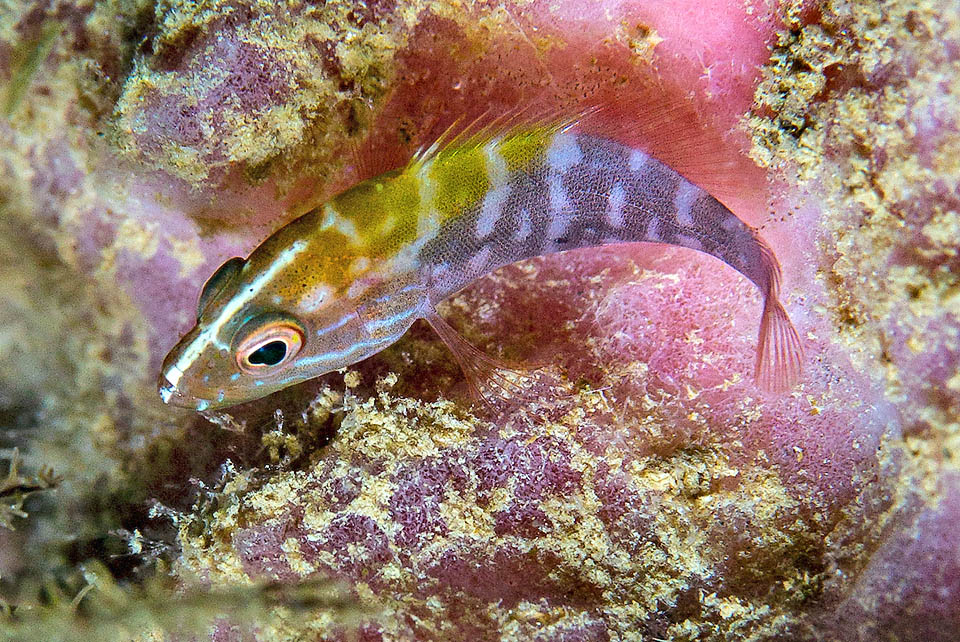
The fecundated eggs are entrusted to the currents. Here a juvenile with its typical maimetic livery © www.carlosestape.photoshelter.com.jpg
Consequently, Cephalopholis cruentata appears since 2017 as “LC, Least Concern” in the IUCN Red List of the endangered species.
Synonyms
Sparus cruentatus Lacépède, 1802; Epinephelus cruentatus (Lacépède, 1802); Petrometopon cruentatum (Lacépède, 1802); Serranus nigriculus Valenciennes, 1828; Serranus coronatus Valenciennes, 1828; Serranus apiarius Poey, 1860; Bodianus stellatus Blosser, 1909.
→ For general information about FISH please click here.
→ For general information about BONY FISH please click here
→ For general information about CARTILAGINOUS FISH please click here.
→ To appreciate the BIODIVERSITY of BONY FISH please click here.
→ To appreciate the BIODIVERSITY of CARTILAGINOUS FISH please click here.
